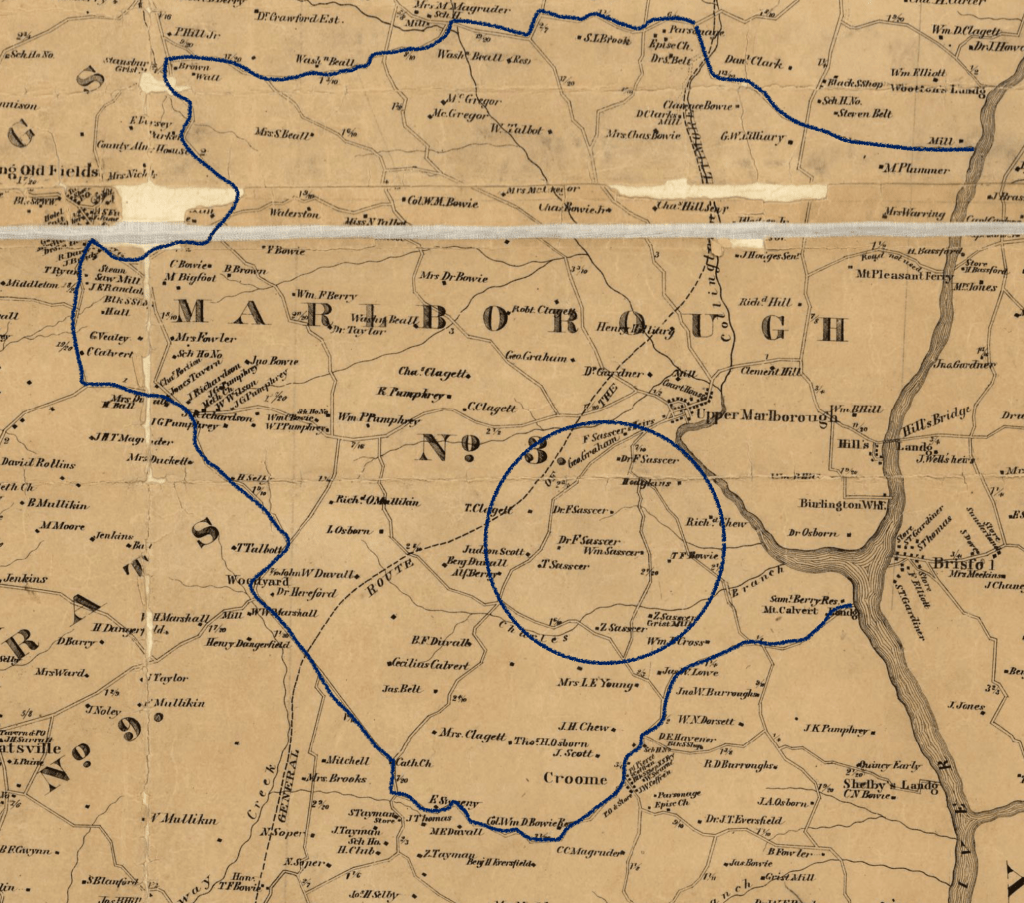03
Marlbourgh District
The Marlborough District was the heart of Prince George’s County and its devotion to chattel slavery. The Town of Upper Marlboro sat as the commercial and political center of the county. In a mostly rural county, the town hosted merchants, politicians, and lawyers. It hosted the courthouse, the jail and the newspapers, such as the Planters’ Advocate. People were sold at its “slave marketplace” while the tobacco they grew were traded for profits that lined the enslavers’ pockets.
Near Upper Marlboro, sitting south of the town, along the road to Croome, sat the estate of Zadock Sasscer and his heirs. In 1807, William Sasscer purchased land from Colmore Beans along the Croome road. In his 1821 will, Wm Sasscer bequeathed his property to his children: to his son William the “land on which he now resides which was left me by my father containing about 400 acres”, to his son Zadock “my dwelling plantation, the same which I purchased from Colmore Beans”, to his sons Thomas and John Judson “the land I purchased of John S. Brooke”. In addition to divvying up his land, he bequeathed the people he enslaved to his children and his grandchildren. To William, the enslaved people who worked the 400 acres from his father; to his three grandchildren, a young girl not older than three (to be separated from her parents). The rest of the people he enslaved were to be divided among his children, Zadock, Thomas and John Judson. Finally, he manumitted Rachel and stipulated that his sons pay her an annual income of ten dollars for her life.

In 1850, Zadock Sasscer property is valued at $26,250 dollars. In 1854, he purchased an additional 354 acres for $19,000 from Sarah Forest and Mary McKearney, heirs of David Crauford. He died in 1859, and his lands were given to his sons, along with his property.
In 1867, when the Maryland General Assembly requested enslavers to submit statements naming the enslaved so that they might seek compensation from the federal government, Frederich Sasscer submitted a statement on behalf of the Zadock Sasscer estate. This statement names of fifty seven people who labored for the Sasscer family and cultivated their hundreds of acres. Using this document, I hope to explore the families in a series of blog posts that explore the connections among the enslaved and uncover family connections.
families of Pleasant Hills
